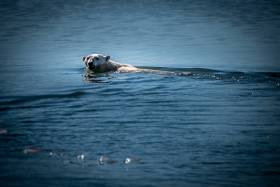Displaying items by tag: Stunning Region
Lecture: Polar Bears of Greenland’s ‘Forbidden Coast’
#lecture - Friends of Glenua will next hold a presentation: Polar Bears of Greenland’s ‘Forbidden Coast’ which is a story illustrated with stunning photos and videos from this fascinating region.
The speaker Adrian van der Lee who is a photojournalist, graphic designer and adventure sailor will present the talk this Thursday 7 March (8pm) in the Poolbeg Yacht and Boat Club, Pigeon House Rd, Ringsend, Dublin 4. There will be an entry contribution of €5 in aid of the RNLI.
Adrian van der Lee joined an Icelandic expedition to the rugged and desolate coast of East Greenland, to film and photograph Polar Bears, deep within the Arctic Circle.
Ten of the highest peaks in the entire Arctic can be found along this challenging piece of coastline, mountains so high that they can be seen from mid-way across the Denmark Strait. Between the peaks, huge glaciers expel vast quantities of ice in to the sea, creating mammoth icebergs of awesome proportions - this is Greenland’s ‘Forbidden Coast’!
To survive here you need to be entirely self-sufficient. Very few adventurers in the annals of Arctic exploration have ever visited this stretch of coast, and no wonder, in this hostile environment the nearest civilisation is many days away - and of course, it is the domain of the apex predator and one of the most fearsome beasts on the planet.
Discover the magnificent beauty of this remote Arctic region from on board “Arktika’, a classic 25-meter, steel-hulled ketch and find out what happened when a Polar Bear attacked their inflatable dinghy while the team was on shore!























